Introduction
This article provides an in-depth examination of coil springs and their materials.
You will learn about various topics including:
- What is a Coil Spring?
- How Coil Springs are Made
- metals Used to Make Coil Springs
- Types of Coil Springs
- And Much More...
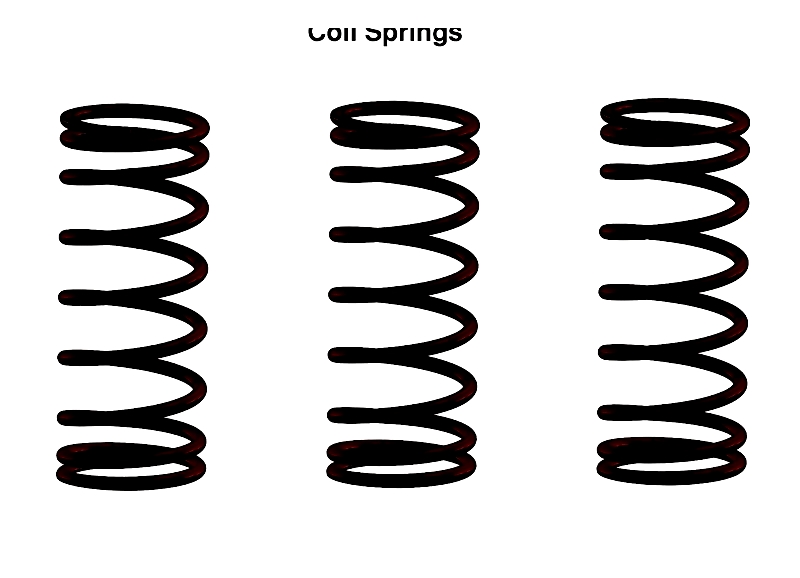
Chapter One – What is a Coil Spring?
A coil spring is a helical mechanical component formed by winding metal into a spiral shape. It stores potential energy and uses it to absorb shock. These springs are produced by twisting metal wire into a continuous helix, converting the wire into an energy-storing element.
Available in various sizes, coil springs are designed to reduce impact and stress on different surfaces. They achieve this through flexibility, allowing them to deform under external stress and return to their original shape when the stress is removed. During compression, the spring stores energy and releases it upon returning to its initial form. The stored energy corresponds to the applied force.
When weight is applied, coil springs compress, storing mechanical energy by shrinking in size. once the weight is lifted, the spring expands, releasing the stored energy as it returns to its original state.
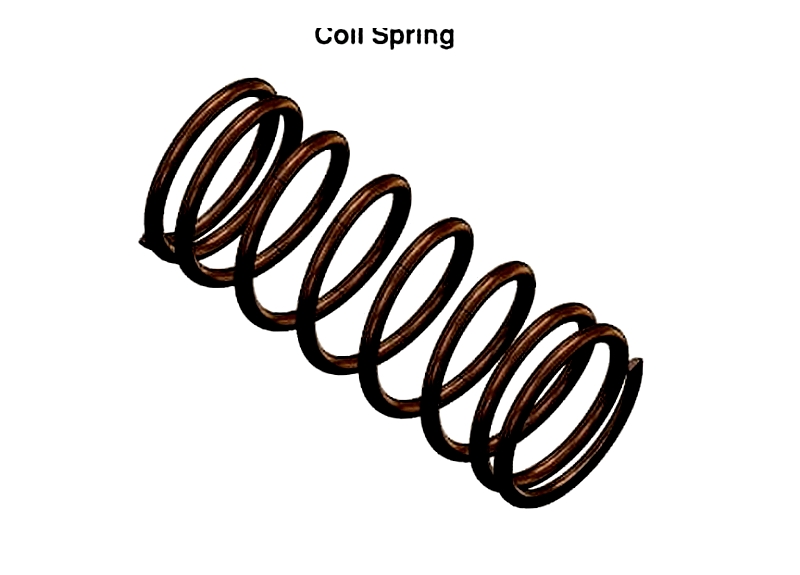
Coil springs can be categorized into three main types: compression, extension, and torsion, each serving distinct functions. Among these, compression springs are the most common. They are typically manufactured through hot or cold winding of spring steel and are engineered to absorb force and resist compression.
Coil springs may be susceptible to corrosion and environmental degradation, which can lead to premature failure. To enhance durability, they are often coated with materials such as powder, epoxy, or polyester. Some springs are also electroplated with zinc or nickel to improve their protective properties.
Chapter Two – How Coil Springs are Made?
Coil springs are essential elastic mechanical components designed to absorb, store, and release energy in various industrial, automotive, and consumer applications. As fundamental parts of suspension systems, mechanical devices, and precision instruments, they play a crucial role in maintaining force, shock absorption, and mechanical efficiency. Coil springs can be made from different spring steel alloys, with material selection tailored to load, environment, and application requirements. There are two main types based on coil spacing: close wound coil springs, where coils are tightly compressed and touch each other, and open wound coil springs, where spaced coils allow variable deflection and elasticity.
The manufacturing method for coil springs depends on factors like production volume, required tolerances, and application standards. For limited or custom runs, manual or lathe-based methods are often used. For mass production of high-performance coil springs, automated spring coiling machines or advanced computer numerical control (CNC) systems are employed to ensure precision, efficiency, and quality control.
The Manufacturing of Coil Springs
Coil Spring Materials
Coil springs are typically made from high-tensile, durable metals suited for specific mechanical properties and environments. Common materials include high carbon steel (such as ASTM A228 music wire), medium carbon steel, chromium vanadium steel, chromium silicon steel, corrosion-resistant stainless steel grades, copper alloys, and nickel-based alloys. Stainless steel coil springs are often used in environments requiring high oxidation resistance, such as marine or food processing industries. Material selection depends on factors like fatigue strength, load capacity, wear resistance, and environmental conditions.
Raw materials for coil springs are usually supplied as bars or rods, drawn into wire of the required diameter. Wire diameter significantly influences the spring's properties, including its spring constant, load-bearing capacity, and durability. Material quality certifications (such as ISO or ASTM standards) and traceability are critical for engineering applications and OEM contracts.
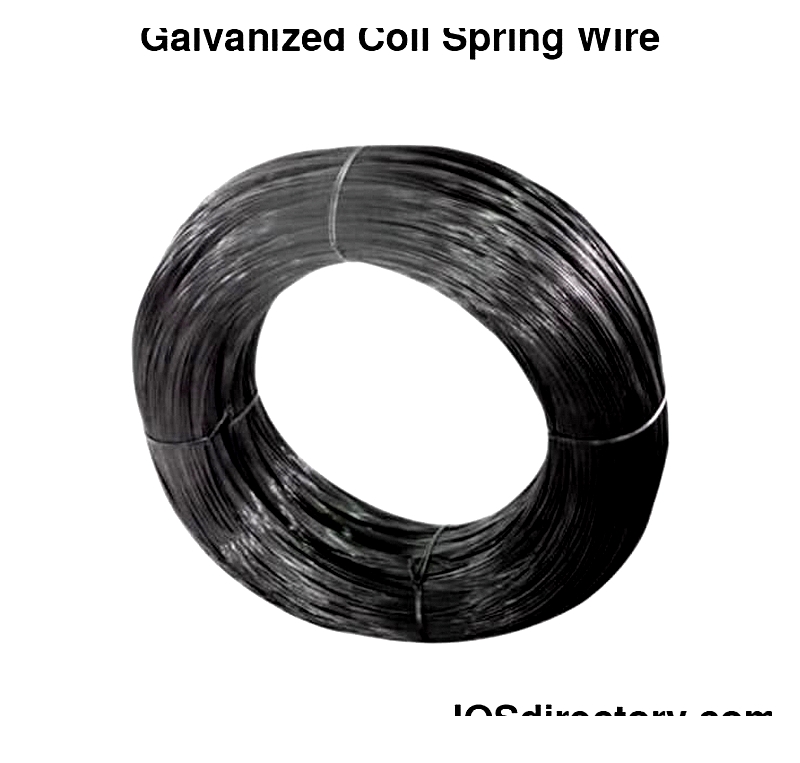
Coil Spring Manufacturing Processes
Cold Winding Process
Heat Treatment – Heat treatment of spring wire precedes cold winding and is essential for optimizing wire strength, ductility, and fatigue resistance. Cold winding is preferred for coil springs with wire diameters up to 0.75 inches (18 mm), enabling precise production of compression and extension springs.
Mandrel – The mandrel coiling process can be manual (ideal for prototyping and small batches) or semi-automated. During winding, the wire is wrapped around a mandrel, guided to ensure correct pitch and alignment. This determines the spring’s free length, diameters, and number of active coils—key factors in its load and deflection characteristics.
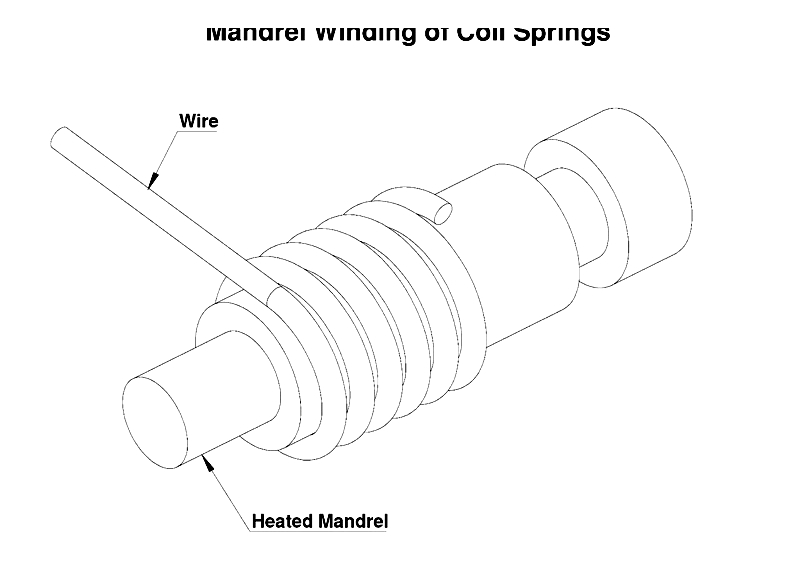
Computer Numerical Control (CNC) – CNC spring manufacturing represents the highest level of automation for coil spring production. CNC machines use computer programming and servo-driven actuators to control wire feeding, winding, shaping, and cutting. This enables rapid, consistent production for demanding industries like aerospace, heavy trucks, and industrial machinery. CNC coiling handles various wire sizes and complex geometries (e.g., barrel, conical, and variable-rate springs), ensuring precision in custom projects.
- Feed rollers pull wire from the spool and supply it uniformly to the forming area.
- Wire guides maintain correct axis and orientation during coiling.
- Block guides channel wire precisely to the coiling point, ensuring dimensional consistency.
- The arbor or mandrel forms the central support for wire shaping.
- The pitch tool, controlled via CNC, determines coil spacing and angle.
- The coiling point bends the wire to the programmed configuration.
- Cutters separate finished springs from the feed at precise intervals.
The following diagram details these CNC spring manufacturing components and workflow.

Hot Winding
Wire – Hot winding is used for coil springs made from thick wire (3–6 inches in diameter), such as heavy-duty suspension springs or mining equipment. The wire is heated to approximately 1700°F, increasing malleability for tight-radius winding without defects.
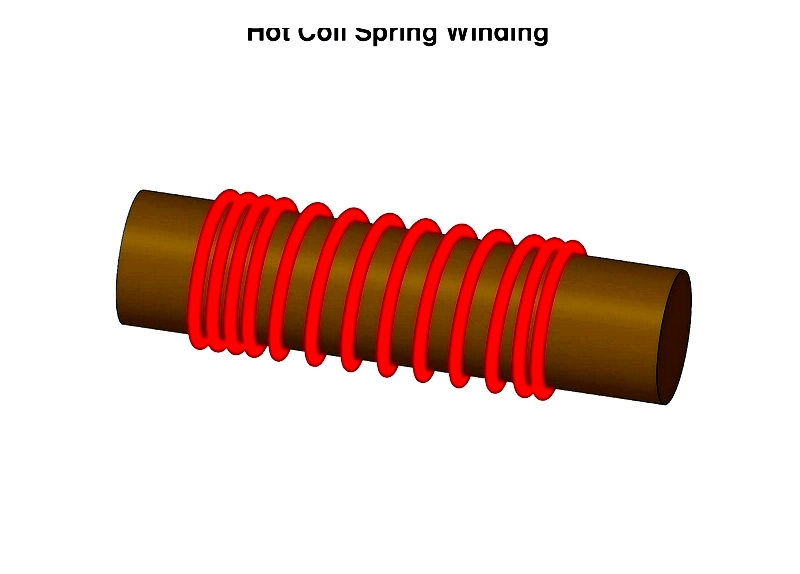
Mandrel – In automated hot coiling, the heated wire is wound around a precision mandrel, with CNC robotics ensuring exact pitch and geometry. This produces heavy coil springs meeting strict industrial standards.
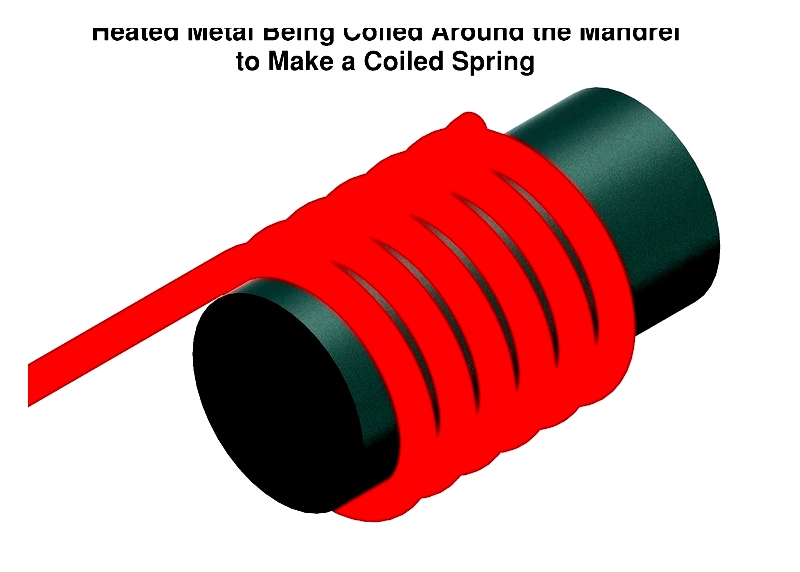
Cooling – Quenching is critical post-hot-winding to harden the coil and lock in microstructure. Oil quenching is common for its speed and ability to minimize metallurgical gradients. Consistent cooling ensures compliance with ISO or SAE standards.
Quenching alters the steel’s crystalline lattice, enhancing strength and spring life. High-quality quenching oils or advanced cooling systems are vital for reliability in demanding applications like vehicle suspension or industrial equipment.





